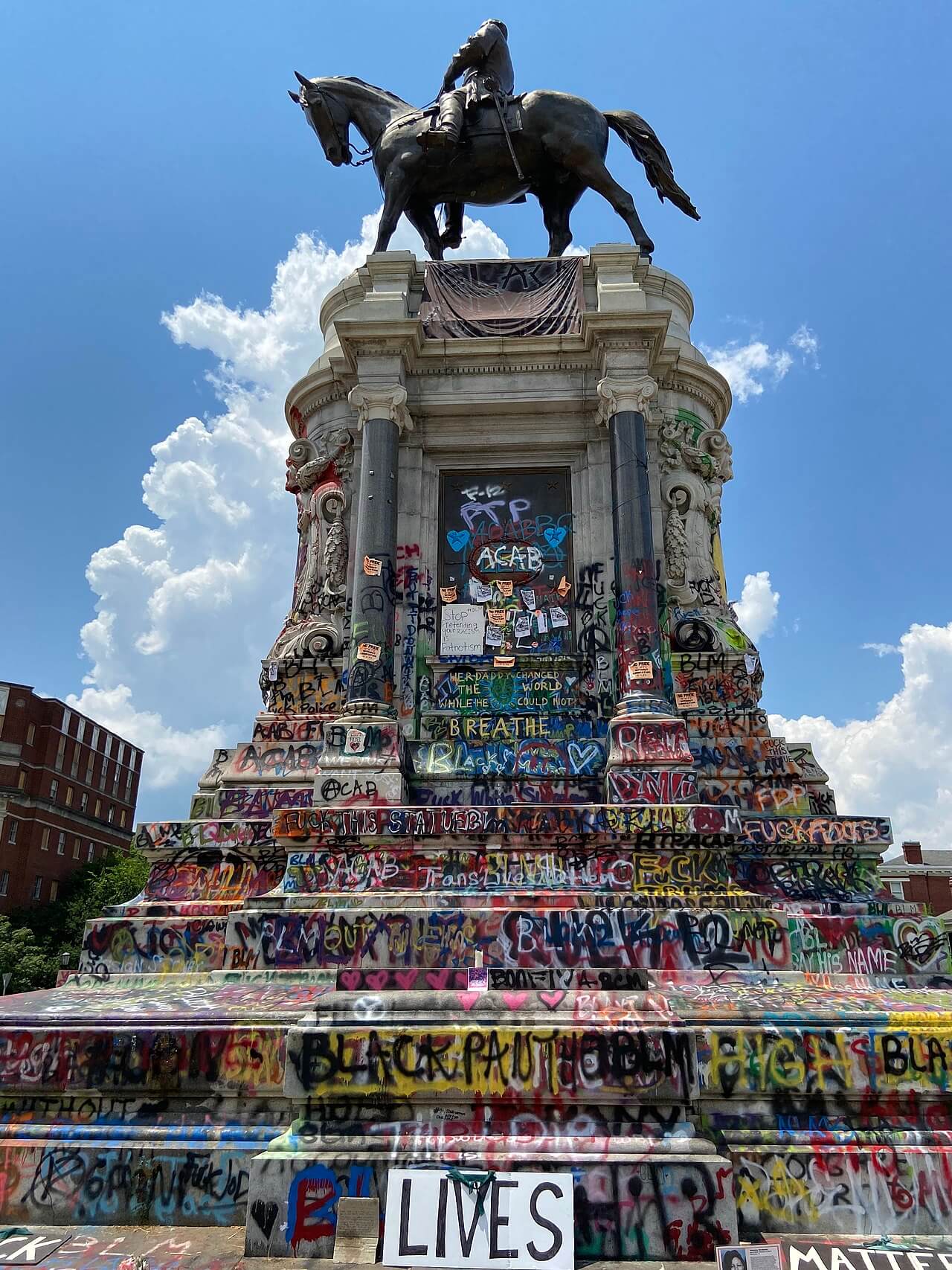Late last month, the Virginia-based Daily Progress obtained documents from the city of Charlottesville detailing multiple applications for the acquisition of two statues celebrating Confederate generals Robert E. Lee and Stonewall Jackson, both of which were taken down by municipal officials on July 10. The statues had initially been approved for removal by the city council in early 2017, largely in response to a petition of protest filed by local high schooler Zyahna Bryant.
The eventual removal of the monuments, however, came only after a protracted legal battle and an even more infamous instance of racial violence. When white supremacists, neo-fascists, neo-Nazis, and Klansmen descended on Charlottesville in August 2017 to oppose the statues’ dislocation, a member of the alt-right drove his car into a crowd of counter-protesters and killed a young paralegal named Heather Heyer. Despite the incident, challenges to the city’s effort to dismantle the monuments continued until April of this year, when the Virginia Supreme Court ruled in favor of Charlottesville officials. By July, the city had relocated both statues to off-site storage facilities.
Now, the complex work of choosing the monuments’ next home has begun. Many advocates for the removal of Confederate statuary from public spaces across the United States point out that the bronzes are a deeply offensive glorification of morally corrupt leaders who fought for the enslavement of African Americans. Portrayals of these figures, they argue, are most appropriate in museums and classrooms where they can be properly explained and contextualized, not in city squares where they loom assertively over members of the public.
For the same reason, in a conversation with the Daily Progress, Charlottesville city councilor Heather Hill expressed her hope that the statues are not relocated to a Civil War battlefield: “The story of why they are no longer in our parks is really important and should be part of any contextualization.” City councilor Michael Payne echoed Hill’s sentiments, noting that “the top priority in determining the final disposition of the statues is ensuring they don’t end up in a location where they can be venerated and celebrated as symbols of either the Confederacy or the events of August 11 and 12, [2017].”

While battlefields are certainly among the 14 organizations that applied to accommodate the statues, Charlottesville officials appear to have a number of alternatives available to them. The Los Angeles-based museum LAXART, for instance, submitted an offer to fund the transferral of the monuments to its galleries on the west coast, where they would serve as centerpieces for its upcoming exhibition MONUMENTS. Alongside the Jim Crow Museum in Big Rapids, Michigan, and the Controversial Art Trust in Charlotte, North Carolina, which also expressed interest in the statues, this option would likely position the monuments in a context most critical of the Lost Cause and the Confederacy at large.
Charlottesville city manager Chip Boyles has also reached out to several Civil War history museums and organizations, including the HTR Foundation in Florida, the Virginia Museum of the Civil War, Civil War Trails Inc., the Valentine Museum, and the American Civil War Museum in Richmond. The American Battlefield Trust in Washington, D.C., and the Metropolitan Museum of Art in New York also received outreach from Boyles, though none has made an offer.
There are multiple battlefields on the list as well, including the Shenandoah Battlefield Foundation in Virginia, Friends of Cedar Mountain Battlefield in Virginia, the Gettysburg Foundation in Pennsylvania, and the Averasboro Battlefield & Museum in North Carolina. It is unclear whether the objections of certain councilors will prevent one of these organizations from receiving the pieces.
The other option that city leaders are considering is more straightforward: the statues could simply be demolished. Such a move would likely anger preservationists and far-right neo-Confederates alike, though it would almost certainly preclude any future use of the monuments to glorify the purveyors of the Lost Cause.











